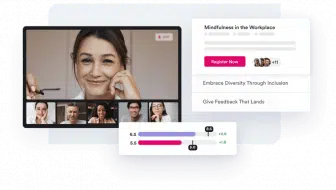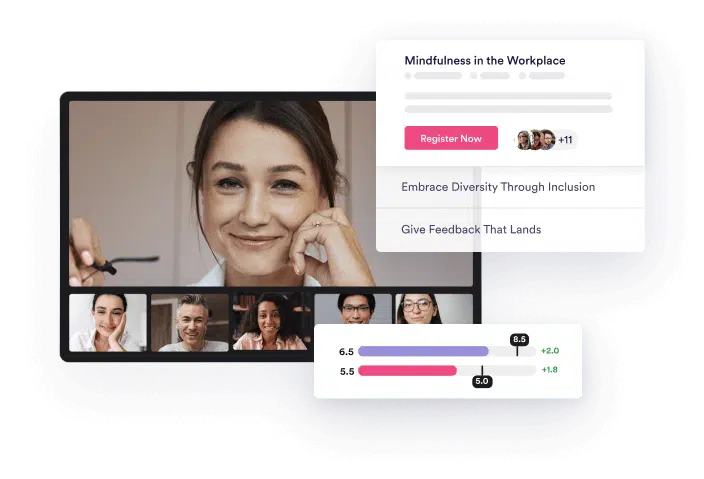There’s a growing trend in the corporate world. Indeed, an increasing number of companies are embracing the idea of distributed teams and remote work. Here at Hone, we’ve been fascinated by this evolution. And we want to better understand the benefits and challenges that come with it. So we decided to host a webinar with some business leaders who are at the forefront of this new movement. The discussion was moderated by Hone’s Co-Founder and CEO Tom Griffiths. A special thank you to our awesome panel that included:
- Julie DeBuhr – Director of Employee Engagement at InVision
- Cheryl Roubian – Head of People at Greenhouse
- Ciara Lakhani – Chief People Officer at Dashlane
- Greg Besner – Founder & CEO at CultureIQ
To explore all the vital distributed team questions that were answered, here are highlights from the virtual discussion. (And in case you missed it or want to revisit some of the points, you can watch the full panel discussion replay here.)
How do you foster engagement and maintain a corporate culture when you have distributed teams?
Let’s set the record straight—it’s entirely possible for companies with distributed teams to have a robust culture. You just need to be intentional with how you approach and engage your employees. Actively push back against an “out of sight, out of mind” mentality and place a premium on collaboration. Consciously and consistently find ways to include remote workers in office gatherings. This could mean anything from holding monthly all-hands calls to hosting office exchanges. Another popular move? Budgeting for annual, company-wide off-sites. This is a fantastic way to let teams build relationships, have impromptu conversations, openly discuss financial goals and clarify mission statements—all of which help solidify company culture and connection.
How do you best manage a remote team?
Some companies are reluctant to take on remote teams. They fear that if employees are out of sight, they’ll be more likely to slack or shirk responsibilities. Fortunately, that often proves to be the exception. You simply need to lead with trust and operate on the assumption that people are doing their jobs and using good judgment.
Of course, it’s still imperative that you consistently check in with individuals who work remotely. Make communication a priority and ensure sure your messages are landing. It can be difficult to pick up on nuance and tone through an email or a camera lens. Hence, you need to make the implicit explicit. Just as vital, you want to be sure your managers are investing in all of their direct reports equally; it’s easy to fall into the habit of focusing on the person in the next cube over the person in the next state. Be cognizant of the fact that it shouldn’t be more advantageous to work from the office.
And don’t forget—good management is not just about individual relationships or managing a team. You also need to think about it at the company level. Once again, this is especially critical when you have both a physical office and a subset of employees who work virtually. Often times, people who work out of the office are privy to certain benefits that aren’t available to those who are remote (an office gym for example). It’s easy for remote employees to feel left out and undervalued as a result. Therefore, it’s critical to be mindful and to find ways to be inclusive—whether it’s throwing a virtual baby shower, scheduling team calls for birthdays or subsidizing fitness classes. These gestures can mean a lot to your employees.
When it comes to remote employees, how should you approach the hiring process?
Companies that embrace remote opportunities face unique challenges during the hiring process. Beyond assessing each candidate’s professional skills, they must also evaluate their ability to work remotely. Thankfully, this can be accomplished by asking some basic, tactical questions. For example, does the applicant have good WiFi? Would he or she have access to a quiet room or office? How easily can a prospective employee hop on a video chat? You need to ensure people will have the necessary tools to tackle their work effectively and successfully.
Of course, it’s important to move beyond the practical. Hiring teams must also set clear expectations for how new remote employees will work with their respective teams. You want to be certain that the candidates are comfortable operating within those parameters. Moreover, the interview process should be designed to test each applicant’s communication skills. After all, strong communication will be integral no matter the specific role. Have candidates briefly join a Slack or jump on a Zoom. If they aren’t clear and responsive, perhaps they aren’t the best option for a remote employee.
 How do you overcome the struggle of dealing with very different time zones?
How do you overcome the struggle of dealing with very different time zones?
When it comes to navigating a wide variety of time zones, accommodation is key. Indeed, in order to be successful, each office must demonstrate compromise and respect for the other locations. This often means rotating meeting times and continually shifting which people/offices adjust their schedules.
Finally, what tools do you recommend for distributed teams?
Certainly, Slack and Donut are two of the most popular tools available. They can be utilized to help with everything from onboarding to managing workflow. Even better, companies can leverage Slack and Donut to mimic the “water cooler effect,” allowing remote employees to conduct casual, spontaneous conversations. For further team bonding, some companies even encourage employees to go on virtual coffee dates. Zoom is also great because it really allows you to check in with other offices and actually see what everyone else is doing.
To streamline and simplify collaboration across teams, tools like Google Docs give all team members the ability to access documents at their convenience and easily see what their colleagues have contributed. And for professional development across remote teams, companies can turn to Hone for invaluable management training for their remote employees. On the whole, tools like the ones mentioned above will facilitate the collaboration that will help foster stronger working relationships and professional bonds.
—
It can be nerve-wracking when companies begin to entertain the idea of maintaining a distributed team. But rest assured, there is nothing to fear as long as you’re thoughtful about the challenges and expectations. With proper planning and policies, you just might discover that having a distributed team is actually a boon to your business.




 How do you overcome the struggle of dealing with very different time zones?
How do you overcome the struggle of dealing with very different time zones?




